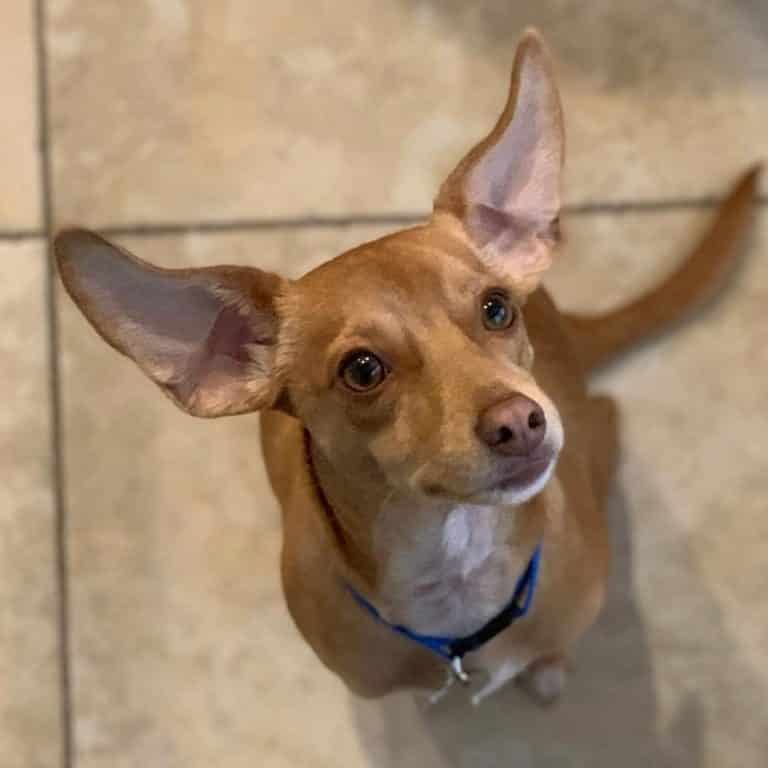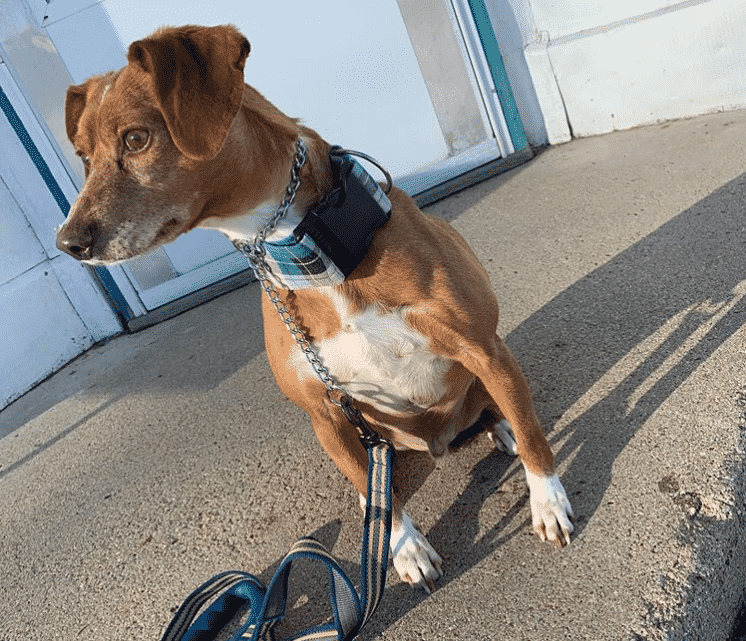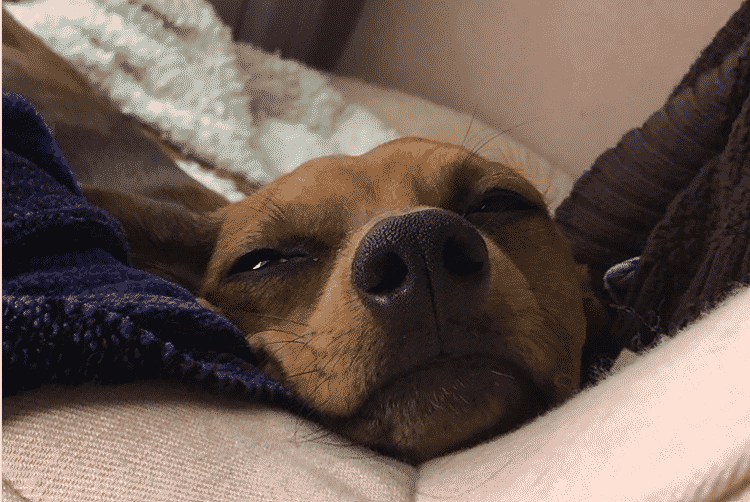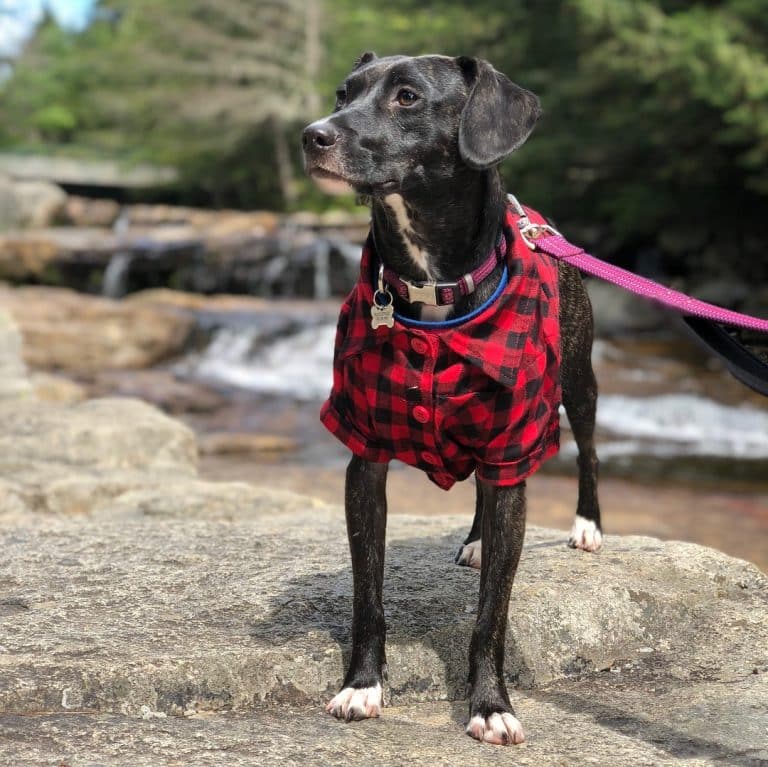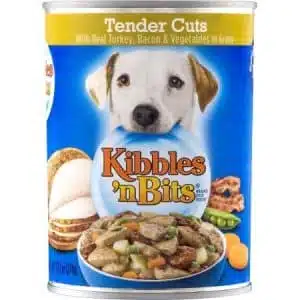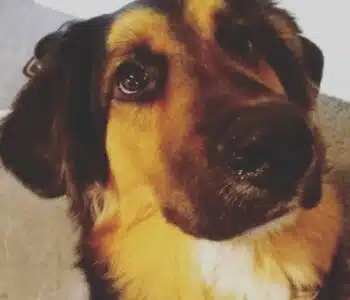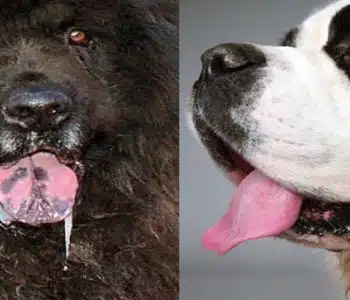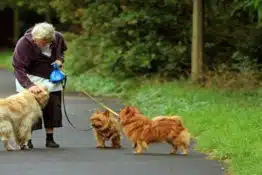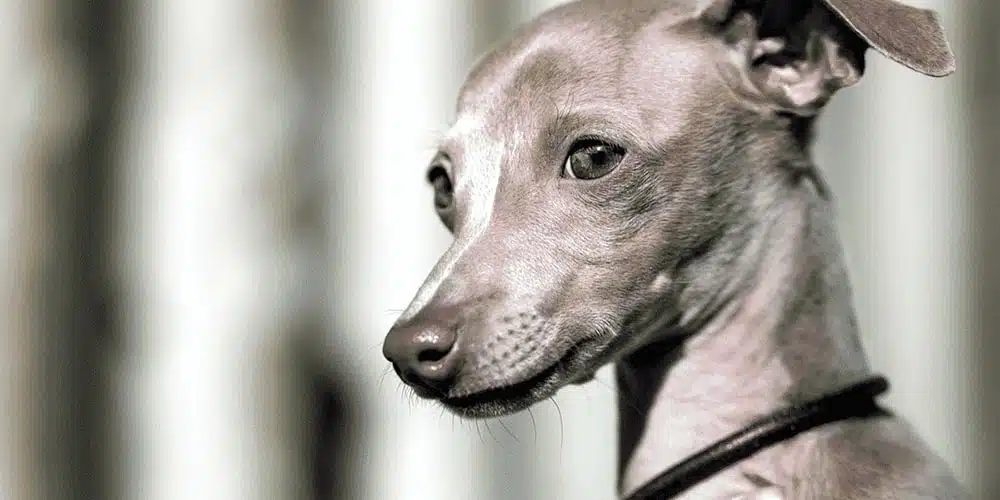
Dachshund Italian Greyhound Mix: A Cute Italian Doxie
If you were wondering how to take two formidable hunting dog breeds, shrink them to a lap-dog size, and make them super cute all in once, here’s your answer. Dachshund and Greyhounds come in mini sizes too, and the Italian Dachshund has to be the cutest little thing since animals decided to stop growing and started jumping into teacups.
If you’re considering adopting an Italian Doxie, here’s all you need to know.
History of the Italian Doxie
Source: secretlifeofpickles
Designer dogs are a thing of novelty, and the Italian Doxie is even more of a newbie in the breed world. There isn’t much we know about the cross. For now, we have to rely on our knowledge of the parent breeds to predict the characteristics of their offspring.
Dachshunds, with their long bodies and short legs, were bred in Germany with a single purpose—to hunt badgers and other burrowing prey. Their shape—aside from inspiring a bunch of Dachshund memes—made the task much easier because it made navigating the underground tunnels more manageable. Their loud bark helped them stay in touch with their human partners even when battling a badger in its burrow.
Dachshunds had to be fearless and stubborn to go against badgers. These ferocious little beasts pose a challenge even for much bigger dogs, which makes the Doxie all the more impressive. They were a great inspiration for Picasso.
The One Thing Pet Owners Regret Not Doing Until It’s Too Late
Is your pet safe?
1 in 3 pets will need emergency veterinary treatment each year and it is estimated a pet receives emergency care every 2.5 seconds in the U.S.
The average cost of treating a broken bone in dogs is $2,700. Cancer treatments? Up to $10,000.
It’s why so many pet owners say their biggest regret isn’t the vet bill—it’s not having pet insurance when they needed it most.
Ask yourself: “If an unexpected $5,000 vet bill hit tomorrow, could I afford it?”
If the answer is no, it’s time to get covered.
Take a look at Lemonade. They have a great app that actually works, they have an instant chatbot that is faster and, dare we say it, friendlier than most companies’ “real” customer service and a quick scroll through Reddit will uncover… people are really vibing with this brand.
So go check them out and take a look. It takes less than a minute.
After half a millennium spent fighting badgers, Dachshunds have retained all their useful skills. Their bodies are still optimized for moving through tunnels, they bark loudly, and they love to dig. Given no other choice, a Doxie will try to burrow in your blankets and sheets. They remain courageous in the face of danger, loyal to their humans, and can be downright pig-headed. With their skillset and charming personality, is it any wonder they have found their place on our list of best dog breeds to adopt? If you’d like to know more about these impressive dogs, check out the 10 facts you should know about Dachshunds with pictures and Dachshund facts.
Italian Greyhound is the smallest sighthound in the world. It can weigh up to 11 pounds and stands at an impressive height of 13 to 15 inches.
As fragile as they look, Italian Greyhounds have survived for over two millennia. They probably originated somewhere in the Mediterranean, in the areas that we today know as Turkey and Greece. The breed blossomed during the Renaissance in Italy, where toy breeds became a status symbol.
Even though an Italian Greyhound is a lap dog more than anything, their prey drive is intact. They will chase anything smaller than themselves.
AKC enlisted this breed into their toy group in 1886.
Three Reasons Not to Adopt an Italian Dachshund
Cute as they undoubtedly are, this teacup is not everybody’s cup of tea. Here are three reasons not to adopt an Italian Doxie.
- They need to calm down.
- They’re being too loud.
- They have severe separation anxiety issues.
They Need to Calm Down
This tiny little creature will go after everything tinier than themselves. They’ll go after cats as well, even though they can be larger than Italian Doxies. Their prey drive is incredibly strong, and they’ll try to massacre your little menagerie of hamsters, guinea pigs, tortoises, parrots, chinchillas, and everything else you or your kids might have thought cute enough to bring into your home. They might not succeed, but they’ll give it their best try. You can try to get them used to cats, but they’ll pick a fight every now and then, or the cat will smack it in the passing, and it’ll be a matter of time before all hell breaks loose. If you have other non-dog pets, find a dog with a lesser prey drive.
They’re Being Too Loud
They’ll bark a lot at everything. A fly will drive them crazy. People on the street can be an endless source of frustration for an Italian Doxie looking at them from a window. They’ll bark about anything that’s on their mind. If you can’t deal with it, find a quieter dog.
They Have Severe Separation Anxiety Issues
Italian Doxies hate to be left alone. They’ll bark. They’ll destroy your things. They’ll pee on your carpet. They’ll poop and then eat the poo. If you know you’re likely to be out a lot, find a more independent cross to adopt and save both you and the Italian Doxie some suffering.
Best Dog Food for Dachshund Italian Greyhound Mix

- Essential, high-quality protein for healthy muscle development, and carbs for energy for an active life.
- Calcium, phosphorus and essential vitamins for strong bones and teeth.
- Glucosamine is added for joint health and mobility support.
- Vitamins, chelated minerals and antioxidants contribute to your pup's immune system health.
- No corn, wheat, soy or chicken (or poultry) by-product meals.
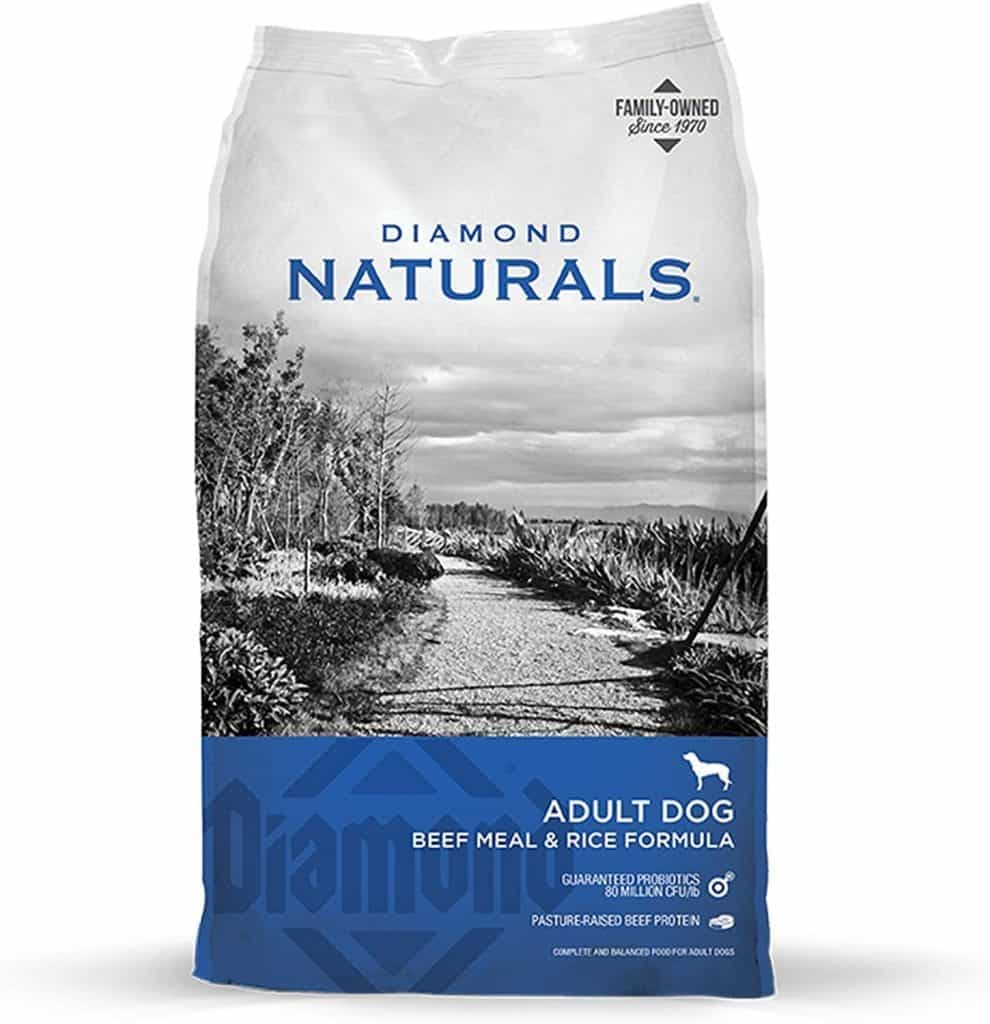
- Made in the USA by a family-owned company using quality ingredients from trusted domestic and global sources.
- With real pasture-raised beef protein as the #1 ingredient, this recipe helps support bones, joints and lean, strong muscles.
- Beef protein provides energy and muscle building blocks, omega fatty acids promote skin and coat health and superfood fruits like blueberries and oranges offer vitamins and minerals.
- Each serving includes species-specific K9 strain proprietary probiotics, plus antioxidants and prebiotics to help support healthy digestion, immune system health and overall wellness.
- Made without corn, wheat, artificial flavors or colors.
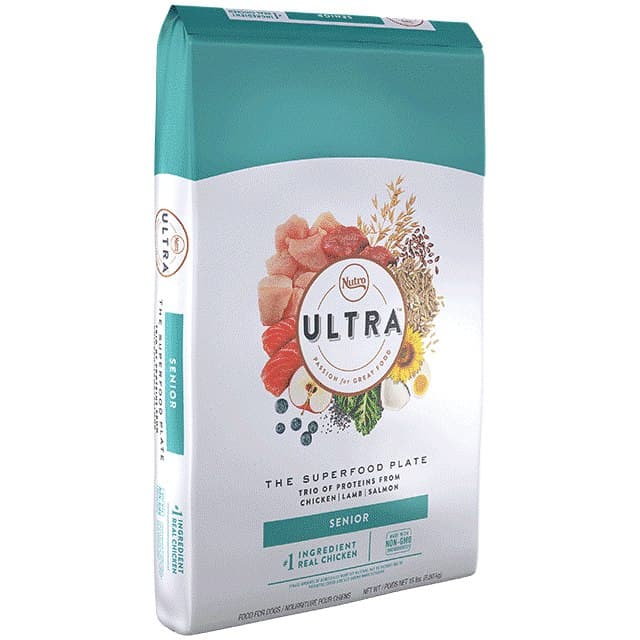
- Protein-rich formula features chicken, lamb, and salmon—and chicken is the first ingredient!
- Contains a blend of 15 superfoods including coconut, chia, kale, and blueberries that promote coat and skin health.
- Recipe specially formulated for senior dogs using only high-quality, real ingredients to provide complete and balanced nutrition.
- Ingredients are sourced from trusted farmers and rigorously tested for quality and food safety.
- No artificial preservatives, flavors, or colors, and chicken by-product meal, corn, wheat, and soy protein free.
Three Reasons to Adopt an Italian Dachshund
Source: paolo_doxini
If you’re home a lot, don’t mind constant yapping, and don’t have any other pets, there is nothing to stop you! Here are three reasons to adopt an Italian Doxie.
- They’re excellent family dogs.
- They’re great companions.
- They are low maintenance.
They’re Excellent Family Dogs
These pups thrive in families. Children adore them because of their happy and playful nature. They love the kids right back because children tend to be a willing playmate much more often than adults. These dogs don’t like solitude, and living with multiple people means that loneliness is not a common occurrence. All in all, an Italian Doxie will make a fantastic family dog.
They’re Great Companions
If you live alone and need a companion, look no further. Italian Doxies are fantastic, affectionate companions that’ll give you all their love, travel with you, and in general, be overjoyed every time you’re together. Be careful, though—only take them in if you know you’ll spend a lot of time with them. This is not a dog that should be left waiting while you’re at work.
They Are Low Maintenance
They don’t shed a lot, they’re small, and they don’t need frequent baths. This mix is one of the easiest to look after when it comes to grooming, and they don’t need a lot of exercise either. If you don’t want to spend a lot of time grooming your pet, this is the perfect dog for you.
Appearance and Personality of the Italian Doxie
Like any cross-breed, an Italian Doxie is unpredictable in terms of appearance and personality. The pup can take after either of the parents, or it can be a balanced mix of the traits from both sides.
In general, unless the Doxie in the mix was longhaired or wirehaired, your pooch should have a short, straight coat. If they take after the Greyhound parent, the dog can be hypoallergenic. Even if they don’t, this cross sheds minimally.
An Italian Doxie usually has a narrow Greyhound face, and it may inherit the body shape from each of the parents, but they tend to have long legs. The ears are always quite large but can be either floppy or erect. They can even have a cute tiny flop at the very tips!
The gentle and submissive nature of an Italian Greyhound balances out the snappy and bossy disposition of a Doxie. Hopefully.
Your pup can take after the Doxie parent in terms of personality, so you’ll have to prepare for stubbornness, short attention span, barking, digging in your garden, and all the rest.
If they take after the Italian Greyhound parent, the worst thing you’ll need to deal with is the small dog syndrome. It’s not as terrible as it sounds—it goes away as soon as you can assert yourself as the boss.
Provided that you don’t get stuck with a Doxie spirit in a Greyhound body, this cross is relatively easy to train, and it gets along with children. They don’t get along with other animals unless you socialize them early and intensively. They’ll regard anything smaller than them as prey, try to chase it, and, in the case of rodents, probably kill it.
| Weight | 6–7 pounds |
| Height | 8–13 inches |
| Size | Small |
| Coat type |
|
| Coat color |
|
| Shedding | Minimal |
| Eyes |
|
| Nose |
|
| Ears |
|
| Temperament | Energetic, active, playful, intelligent |
| Life expectancy | 12–15 years |
| Hypoallergenic | Yes |
| Kid-friendly | Yes |
| New owner friendly | Yes |
| Breed recognition |
|
How Active Is an Italian Greyhound Dachshund Mix Dog?
Source: blitz_bullet_service_dogs
This cross is a moderately active one, so you won’t need to go out of your way to give them the exercise they need. Both parent breeds are active ones since a Doxie is a hunter, and the Italian Greyhound originates from hunting dogs. Still, this little fellow will roam around all day long, spending their energy on their daily tasks (checking up on you, barking at flies, stalking the cat, being beaten by the cat, and so on).
In practice, you’ll need about 60 minutes of exercise daily. Take your pooch on two 20-minute’ walks and have 20 20-minute playing sessions, and you should be good to go!
If you spend any less time on their exercise needs, though, your dog might become restless and destructive, in which case you should hide all your shoes, remote controls, newspapers, toilet paper, and basically everything else you own. You’ll need to soundproof your flat, too, because they’ll bark even more than they usually do.
It’s easier to give them the exercise they need, so put on your walking shoes, grab the leash, and keep your property.
| Activity level | Recommended miles/day | Activity minutes/day |
| Moderate | 6 | 60 |
Health Issues Connected to the Dachshund Italian Greyhound Cross
This cross is a generally healthy one because the physical properties of the two parent breeds balance each other out nicely. The back problems connected to the Doxie in the mix are often avoided by the shortening of the body and the elongation of the legs. The Italian Greyhound doesn’t have many health issues in general, so this is a great combo.
There are some things to look out for, though. Here are the two most important ones.
- Intervertebral disc disease. This health issue is a threat to all Doxies and Doxie mixes. They all need good care throughout life to reduce the risks of getting the condition and lengthen their lifespan. It is less likely to happen in this particular mix because of the Greyhound genes, but it is still possible, especially if your pooch has inherited the Doxie shape. The problems arise then the cushioning discs that are placed in between the bones of the spine start pressing on the spinal nerve. This causes a lot of pain for the dog and can even lead to paralysis.
- Periodontal disease. This is just a fancy name for gum disease. It happens when inflammation of the gums goes untreated. The most common causes are genetics, poor nutrition, and lack of hygiene. Make sure you take good care of your pooch’s teeth, and you can avoid this problem altogether.
Less frequent health concerns that usually come from the Doxie side are skin problems and seizures. If your furry friend suffers from dry skin, change their nutrition.
Preventive testing can help notice any issues before they turn into severe threats to your dog’s health, so don’t postpone your regular checkups with your vet.
| Major concerns | Minor concerns | Occasional tests |
|
|
|
The Best Diet for the Dachshund Italian Greyhound Mix
Source: oodle_of_noodles
Because your dog’s health depends on the food you feed them, it is wise to make sure they eat only the best food available. Take a look at our list of best dry dog food for small dogs to find the best brands to offer your pooch. Check out these best-canned dog food brands if they are partial to wet food.
It’s important to adapt the food to their age. These best senior dry dog food brands are a good option if your little buddy is already past their prime. You should look for the best puppy food brands in case you have a little munchkin rolling around your house.
Not all dog foods are made the same, so here are our favorites.
- Wellness Core® Natural Grain Free Dry Dog Food. This brand includes a lot of calcium and phosphorus in their food. This is excellent for joints and bones, which tend to pose a problem for Dachshunds and Doxie mixes.
- Ollie Healthy Turkey Feast Fresh Dog Food. This brand produces food that includes first-grade meat, veggies, fruits, Omega-3 fatty acids, chia seeds, and many other useful ingredients. While this option is a bit pricier than the others, it’s probably the best-quality dog food on the market.
- Merrick Grain-Free Puppy Real Chicken & Sweet Potato Recipe Dry. This brand is a great choice if your pooch is still a puppy. The size of the kibble is adapted to tiny puppy mouths, and the food itself includes all the nutrients necessary for healthy growth.
You are what you eat, so your buddy will thank you if you steer clear of these worst dry dog food and worst dog treat brands.
Grooming Requirements of the Italian Greyhound Dachshund Mix
Italian Doxies are one of the easiest cross-breeds to take care of. Because they usually have a short coat and they don’t shed a lot, you need to brush them only once a week. Their short coat makes them susceptible to colds during the winter, so make sure you know how to deal with freezing temperatures.
Don’t bathe them too often because that can damage their coat’s water resistance. It’s best to give them a bath when needed instead of on schedule. This might be more frequent than you’d think, though, because the Doxie in the mix thoroughly enjoys rolling around in stinky things, and the Italian Greyhound in the cross loves sleeping in your bed.
Make sure you clip their nails once every two weeks. If you hear them clicking on the floorboards, you’ll know that a manicure is overdue. Follow the best dog grooming tips for more useful info!
Brush your pooch’s teeth every day. Italian Greyhounds are prone to tooth-related issues, so this is an essential part of their maintenance. If you can’t do it every day, find some tasty dental chews and brush your teeth every other day. Check out our guide on the top 10 best dog dental chews to keep your dog’s gums healthy.
| Brushing frequency | Brushes for Italian Greyhound Dachshund Mix |
| Weekly |
|
Is an Italian Dachshund Easy to Train?
Source: sweetpeachpuppy
It usually is. Unless the Doxie side in them is exceptionally strong, this cross should be only mildly challenging in terms of training. They tend to do best with positive reinforcement, so avoid punishment as a teaching method. It is not likely to do anything but provoke the notorious Doxie stubbornness, whose training can be challenging. A bit of praise can go a long way with any dog, but treats and gifts are the best way to motivate your pooch. Make sure you use high-quality treats and try to stick with healthy or natural options.
Always try to teach them not to jump on your furniture. Italian Greyhound in the mix loves to do it, but it can cause a lot of back issues if your Italian Doxie has inherited the Doxie shape.
Socialize them as soon as possible, especially if you have other pets. You can teach your Italian Doxie not to go after cats if you start early enough. You can try to teach them not to chase hamsters or guinea pigs, but in most cases, you’ll be fighting a lost battle.
If you’re a first-time owner, check out our guide to the best ways to train your puppy as well as Dachshund potty training. Try to avoid the 5 most common mistakes in dog training that lots of pet owners tend to make.
Does an Italian Doxie Make a Good Family Pet?
Yes, they do. They are incredibly loyal and affectionate and will love the entire family to bits. These dogs are playful little creatures that your children will adore.
You should never leave your dog alone with toddlers, though. Young children don’t usually know what is and isn’t allowed when it comes to pets. If your Italian Doxie feels threatened, expect them to nip a little. It’s not likely to hurt the child seriously, but the nip can frighten them and cause future issues with the kid’s relationships with dogs in general.
Check Out These Other Cute Dachshund Mixes
The Italian Greyhound Dachshund mix is great in many regards, but these pups might not suit your personality, home, or situation. If you love Doxies and are determined to adopt a Dachshund mix, check out these other cuties!
| Dachshund Pug mix | Dachshund Lab mix | Dachshund Beagle mix |
| Dachshund Golden Retriever mix | Dachshund Pitbull mix | Dachshund Corgi mix |
| Chihuahua Dachshund mix | Jack Russell Dachshund mix | Dachshund Poodle mix |
| Dachshund Yorkie mix | German Shepherd Dachshund mix | Dachshund Terrier mix |
| Pomeranian Dachshund mix | Cocker Spaniel Dachshund mix | Shih Tzu Dachshund mix |
| Min Pin Dachshund mix | Basset Hound Dachshund mix | Dachshund Husky mix |
| Maltese Dachshund mix | Dachshund Dalmatian mix | Australian Shepherd Dachshund mix |
| Border Collie Dachshund mix | Rottweiler Dachshund mix | Doberman Dachshund mix |
| Papillon Dachshund mix | Rat Terrier Dachshund mix | Italian Greyhound Dachshund mix |
| Bulldog Dachshund mix | Blue Heeler Dachshund mix | Boxer Dachshund mix |
| Great Dane Dachshund mix | French Bulldog Dachshund mix | Weimaraner Dachshund mix |
| Dachshund Boston Terrier mix | Cavalier King Charles Spaniel Dachshund mix | Cairn Terrier Dachshund mix |
| Shiba Inu Dachshund mix | Dachshund Bichon mix | Pekingese Dachshund mix |
| Schnauzer Dachshund mix | English Cream Dachshund |
FAQ: Dachshund Italian Greyhound Mix
1. What breed’s direct ancestors include the Italian Greyhound and the Dachshund but not the Doberman? The direct ancestors of the Italian Greyhound and Dachshund, excluding the Doberman, trace back to the sighthound and hunting dog groups, respectively.
2. How big do Italian Greyhounds get? Italian Greyhounds are a small breed, typically weighing between 6 and 15 pounds and standing around 13 to 15 inches tall at the shoulder.
3. What does a Pug Greyhound Mix look like? A Pug Greyhound Mix, also known as a Puggit, may feature a unique blend of the Pug’s distinctive facial features and the sleek build of the Greyhound, resulting in a mix with various appearances.
4. How long do Italian Greyhounds live? Italian Greyhounds generally have a lifespan of around 12 to 15 years, but proper care, nutrition, and regular veterinary check-ups can contribute to a longer, healthier life.
5. Ever wonder what happens when you mix a Pug and an Italian Greyhound? Mixing a Pug and an Italian Greyhound results in a charming and unique combination of traits. The resulting mix, often known as a Pug Italian Greyhound, may exhibit characteristics from both parent breeds, offering a delightful and affectionate companion.
6. How much do Italian Greyhounds shed? Italian Greyhounds have short coats that shed minimally. While shedding varies among individuals, regular grooming, such as weekly brushing, can help manage any loose hair and maintain the coat’s health.
7. When do Italian Greyhounds stop growing? Italian Greyhounds typically reach their full height and size by around 9 to 12 months of age, but they may continue to fill out and mature until they are 18 months to 2 years old.
References
- https://en.wikipedia.org/wiki/Dachshund
- https://en.wikipedia.org/wiki/Italian_Greyhound
- Sauvé, Christopher P., et al. “Oronasal and Oroantral Fistulas Secondary to Periodontal Disease: A Retrospective Study Comparing the Prevalence Within Dachshunds and a Control Group.” Journal of Veterinary Dentistry, vol. 36, no. 4, 2019, pp. 236–244., doi:10.1177/0898756420909657.
- Hoppendale, George, and Asia Moore. Italian Greyhounds: a Purebred Toy Canine, Italian Greyhound Dog Complete Owners Manual, Italian Greyhound Care, Costs, Feeding Grooming, Health and Training All Included. IMB Publishing, 2015.
80% of Dogs Develop Arthritis or Joint Pain by 7 Years old – Here’s How to Protect Them
Most of us train our dogs when they are puppies to jump up on furniture. We think it’s harmless (and easier than always lifting them), but for dogs, couches and beds are very high compared to the size of their bodies.
Every time they jump it compresses their back and applies enormous force to their joints.
It’s no wonder that an incredible 80% of dogs experience arthritis or joint pain by only 7 years old.
Luckily, there is a vet-recommended solution.
It’s the PawRamp by Alpha Paw. An adjustable ramp that allows dogs to safely get on and off couches and beds. PawRamp makes joining you in bed or on the couch effortless and fun.
As a bonus, you can use code SAVE35 to get $35 off the PawRamp today.

